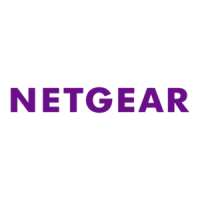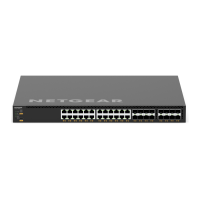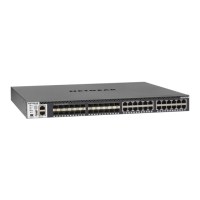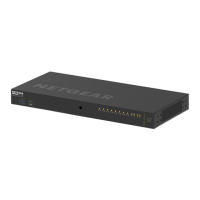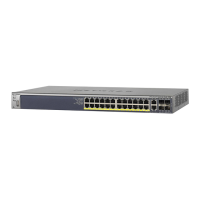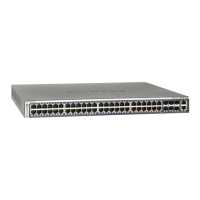OSPF and OSPFv3
386
M4300 Series and M4300-96X Fully Managed Switches User Manual
4. Click the Login button.
The System Information page displays.
5. Select Routing > OSPFv3 > Advanced > NSSA
Area Configuration.
6. In the Area ID field, enter the OSPF area ID.
An area ID is a 32-bit integer in dotted-decimal format that uniquely identifies the area to
which a router interface connects.
7. Configure the Import Summary LSAs by selecting Enable or Disable from the list.
If you select Enable, summary LSAs are imported into stub areas.
8. Configure the Default Information Originate.
This option permits you to advertise a default route into the NSSA when the import
summary LSAs are disabled.
a. In the Admin
Mode list, select to Enable
or Disable the default information originate.
b. In the Metric Value
field, set the default metric value for default information
originate. The value range of values is 1 to 16777214.
c. In the Metric Type
field, select the type of metric specified in the Metric Value field.
Options are as follows:
• Comparable Cost. External type 1 metrics that are comparable to the OSPF
metric.
• Non-comparable Cost. External type 2 metrics that are assumed to be larger
than the cost of the OSPF metric.
9. Select the Translator Role
of the NSSA.
Options are as follows:
a. Always. Cause the router to assume the role of the translator the instant it becomes a
border router.
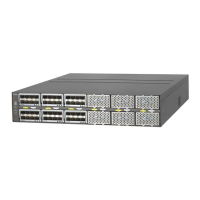
